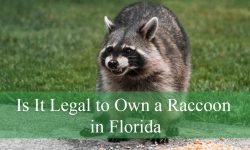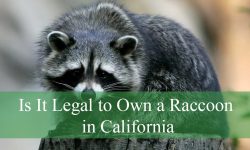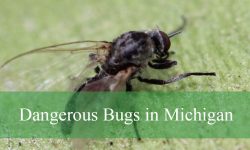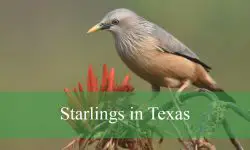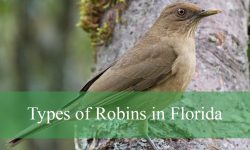Across the sun-drenched grasslands and high plains of Colorado, small, furry creatures pop in and out of the earth like seasoned builders. These are prairie dogs—social rodents often misunderstood but vital to the ecosystems they inhabit. Their tunnels stretch deep and wide beneath the soil, acting as both fortress and community center. While they may appear humble at first glance, prairie dogs are nothing short of architectural geniuses in the wild.
Prairie dogs have earned the nickname “nature’s architects” for a reason. Their ability to transform open plains into intricate subterranean cities rivals the sophistication of human planning. These burrow systems offer not only shelter but also a complex infrastructure that influences the survival of countless other species. In Colorado, where their presence is particularly significant, prairie dogs play a unique ecological and symbolic role.
Understanding why prairie dogs in Colorado are viewed as such remarkable builders requires examining their physical capabilities, social behaviors, and environmental impact. This article delves into each of those aspects in detail, offering a comprehensive view of why these animals are so celebrated by biologists and conservationists alike.
The Prairie Dog Species Found in Colorado
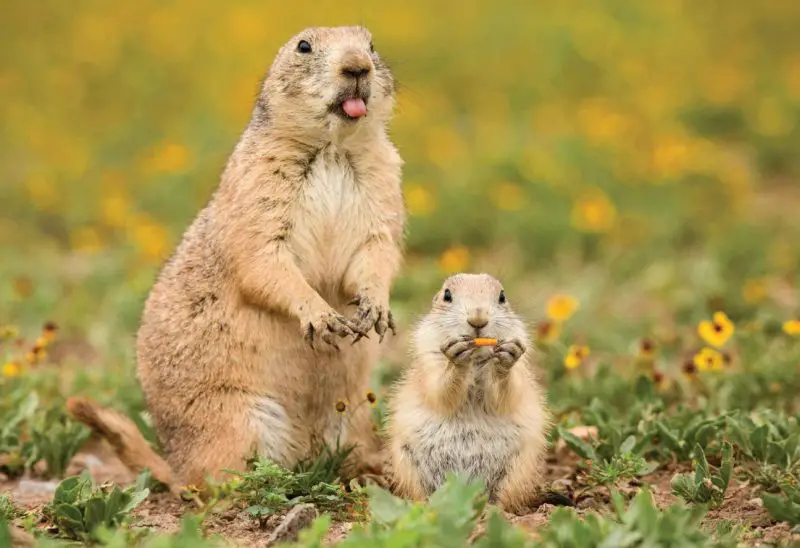
Colorado’s Primary Prairie Dog Populations
Three species of prairie dogs make their home in Colorado: the black-tailed prairie dog, the Gunnison’s prairie dog, and the white-tailed prairie dog. Of these, the black-tailed prairie dog is the most widespread and the most commonly associated with the label “nature’s architect.” Found mostly in the eastern plains, this species lives in large colonies that can extend for hundreds of acres. Gunnison’s prairie dogs are found more frequently in the southwestern part of the state, especially in high-elevation plateaus, while the white-tailed prairie dog occupies northwestern Colorado.
Each species contributes in its own way to the architectural legacy of prairie dogs in Colorado. Though the size, elevation, and soil composition may vary by region, all these animals share the remarkable trait of constructing elaborate burrow networks to support their communities.
Social Structure and Engineering Precision
Prairie dogs live in groups called “coteries,” typically consisting of one male, several females, and their offspring. These coteries form the fundamental units of larger colonies, sometimes referred to as “towns.” It’s within these towns that the engineering feats of prairie dogs become apparent. They are not haphazard diggers; instead, they create purposeful layouts with dedicated chambers for nesting, food storage, escape, and even air ventilation.
Each entrance hole is designed with intention. Some holes are built with raised mounds to prevent flooding, while others are camouflaged as emergency exits. Their ability to read the terrain and adapt their structures to suit local conditions is a key reason prairie dogs in Colorado are seen as masterful builders.
Underground Metropolises: The Burrow Systems
Design Features of a Prairie Dog Burrow
Beneath the surface, prairie dog colonies are a maze of tunnels, chambers, and passageways. A typical burrow may reach depths of 10 feet and stretch up to 30 feet in length, though in expansive colonies, interconnected systems can go much further. Within the tunnels are specialized rooms—some for sleeping, others for raising young, and some just for temporary refuge. The system allows prairie dogs to avoid predators, escape harsh weather, and maintain social cohesion.
Ventilation shafts are one of the most ingenious features. By using elevation differences and opening placements, prairie dogs create airflow that regulates temperature and removes stale air. In effect, they’ve developed passive air-conditioning, something human architects only began mastering in recent history.
Purpose Beyond Shelter
The burrows are more than just homes; they serve as multi-functional survival tools. During winter, when snow and freezing temperatures blanket Colorado’s prairies, the deeper levels of these tunnels offer warmth and insulation. During summer, the same burrows remain cooler than the scorching surface. The presence of separate entrances and exits helps prairie dogs avoid predators like coyotes, foxes, and birds of prey.
Additionally, their tunnels contribute to the aeration of the soil and water infiltration, which improves plant growth and enriches the ecosystem. By building beneath the ground, prairie dogs aren’t just safeguarding themselves—they’re setting the stage for a more vibrant natural community.
Ecosystem Engineers: Prairie Dogs and Biodiversity
Creating Habitat for Other Species
One of the primary reasons prairie dogs in Colorado are known as “nature’s architects” is their influence on other wildlife. Their burrow systems often become homes for many other animals, including burrowing owls, rattlesnakes, and insects. Even once a prairie dog town is abandoned, the infrastructure remains a critical resource for other creatures.
Burrowing owls, for instance, are heavily dependent on prairie dog towns for nesting sites. These birds do not dig their own burrows and instead rely on the existing architecture. Similarly, black-footed ferrets—one of North America’s most endangered mammals—rely almost entirely on prairie dog colonies for both shelter and food.
This ripple effect of biodiversity demonstrates how prairie dogs help maintain ecological balance. Without their digging, the entire prairie landscape would shift, and many species would struggle to survive.
Impact on Vegetation and Soil Health
Prairie dogs also influence the plant life around them. By grazing on grasses and selectively pruning certain plants, they help shape the composition of the prairie. Their grazing can reduce the dominance of certain grasses and allow for increased plant diversity, which supports a more varied array of pollinators and herbivores.
Their digging activities turn over the soil, promoting the mixing of nutrients and aiding in seed dispersion. This natural tilling process improves soil health and water absorption, which is critical in arid regions of Colorado prone to drought. In this way, prairie dogs contribute to long-term landscape resilience.
Conflict with Human Development
Agricultural Tensions and Habitat Loss
Despite their environmental benefits, prairie dogs are often seen as pests by farmers and developers. In Colorado, many of the areas ideal for prairie dog colonies also happen to be attractive for agriculture or suburban expansion. The conflict arises when prairie dogs are perceived as damaging crops or destabilizing soil, leading to pressure for their removal or extermination.
Over the past century, habitat fragmentation and extermination campaigns have drastically reduced prairie dog populations. In some regions, colonies that once stretched for miles have disappeared entirely, replaced by highways, farms, and housing developments. This loss of prairie dogs has triggered cascading effects across ecosystems, especially where keystone species are involved.
Efforts to balance human needs with prairie dog conservation remain ongoing. Wildlife corridors, conservation easements, and relocation programs have been implemented in parts of Colorado to mitigate this conflict, but the struggle between preservation and development continues.
Public Perception and Education
Historically, prairie dogs were not viewed with much sympathy. They were labeled nuisances, shot for sport, or poisoned to protect crops. However, recent shifts in ecological understanding have led to changing attitudes, especially among conservationists, scientists, and even local communities. Educational campaigns in Colorado now emphasize the ecological role of prairie dogs, helping the public see them as vital players rather than intruders.
Organizations dedicated to prairie dog conservation have helped promote coexistence strategies. For example, some ranchers have adopted rotational grazing systems that allow for prairie dog presence without harming productivity. These adaptive strategies underscore the idea that with knowledge and cooperation, both people and prairie dogs can thrive.
Cultural and Scientific Significance
Symbol of Grassland Ecosystems
In Colorado, prairie dogs have become a symbol of the high plains. Their presence signifies more than just wildlife—it represents the health and integrity of a grassland ecosystem. Their complex societies, cooperative behaviors, and engineering skills remind us that even small creatures can have monumental impacts.
Scientists often refer to prairie dogs as a “keystone species,” meaning their role is essential to the structure of the ecosystem. Without them, the landscape would change drastically. Their social structure and construction techniques have even been studied as models of sustainable living and urban design.
As climate change and development continue to alter the American West, prairie dogs stand as resilient builders of hope. Their tunnels may run underground, but the lessons they offer rise to the surface in profound ways.
Language, Behavior, and Communication
Prairie dogs also demonstrate surprising levels of communication and intelligence. Studies have shown that they use a form of vocal language to warn each other about specific threats. Their calls vary depending on the predator and may even include descriptive elements such as size, shape, or direction.
These complex vocalizations point to a level of social sophistication that mirrors their architectural skills. Just as they collaborate to construct and maintain their burrows, they communicate to ensure survival and community wellbeing. In many ways, their language system is as intricate as their tunnel systems—further justification for calling them nature’s architects.
Conservation Efforts and the Future
Reintroduction and Protected Areas
In recent decades, conservationists in Colorado have pushed to protect prairie dog populations through reintroduction projects and habitat protection. Places like Rocky Mountain Arsenal National Wildlife Refuge and the Pawnee National Grassland are home to preserved colonies. These sites serve not only as safe havens for prairie dogs but also as research grounds for understanding prairie ecology.
Reintroducing prairie dogs has also allowed for the revival of other threatened species. For example, successful black-footed ferret recovery projects rely on healthy prairie dog towns. This interdependence shows how one species’ survival often hinges on another’s architecture.
Continued monitoring, public education, and ecosystem-based land management are key to the future of prairie dogs in Colorado. Their architectural legacy must be safeguarded to preserve the broader web of life on the plains.
The Role of Citizens and Policy
Local communities play a crucial role in prairie dog conservation. From homeowners associations to municipal governments, policy decisions at the grassroots level often determine whether colonies are preserved, relocated, or eradicated. Citizen science programs and wildlife volunteer opportunities have empowered residents to take part in habitat mapping and monitoring.
At the state level, Colorado has enacted some regulatory measures to ensure that prairie dog removals are reviewed, especially when public lands are involved. However, enforcement varies, and gaps remain. Increasing public engagement and integrating prairie dog protection into broader environmental planning will be necessary steps for long-term success.
FAQs About Prairie Dogs in Colorado
What species of prairie dogs live in Colorado?
Colorado is home to black-tailed, Gunnison’s, and white-tailed prairie dogs, each occupying different habitats across the state.
Why are prairie dogs considered keystone species?
Prairie dogs are considered keystone species because their activities support numerous other organisms, from burrowing owls to soil microbes.
How do prairie dog burrows help the environment?
Their burrows improve soil aeration, aid water absorption, and provide shelter for many species, making them ecological engineers.
Are prairie dogs protected in Colorado?
While some local protections exist, prairie dogs are not fully protected statewide. Conservation efforts depend heavily on local policies and public support.
Can prairie dogs and humans coexist?
Yes, with proper land-use planning and community education, prairie dogs and humans can coexist while maintaining healthy ecosystems.
Conclusion: The Burrowing Architects of the Plains
Prairie dogs in Colorado are more than just curious creatures popping out of the ground. They are master engineers whose underground cities reflect a complex understanding of environment, social organization, and survival. Their burrows don’t just house their families; they sustain entire ecosystems.
Calling them “nature’s architects” is no exaggeration. It’s a fitting tribute to their ability to reshape the land in ways that benefit both themselves and countless other species. As Colorado continues to grapple with growth, development, and climate change, preserving these tiny architects may prove essential to maintaining the health of the plains.
In learning from prairie dogs, we gain insight not just into wildlife behavior, but into the value of thoughtful design, community cooperation, and ecological balance. They may be small, but their legacy runs deep—quite literally beneath our feet.

